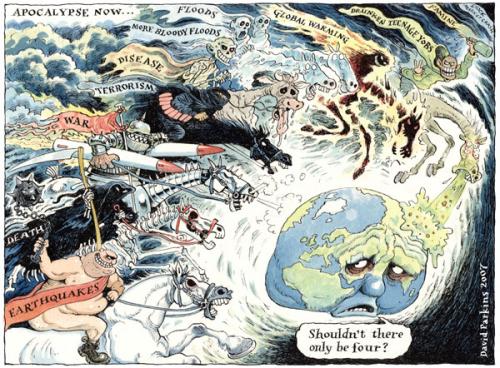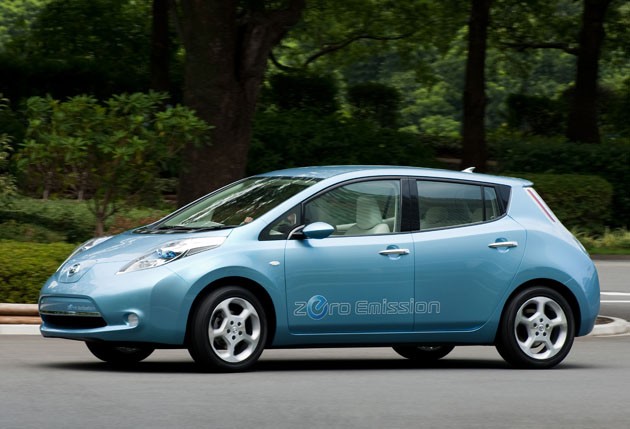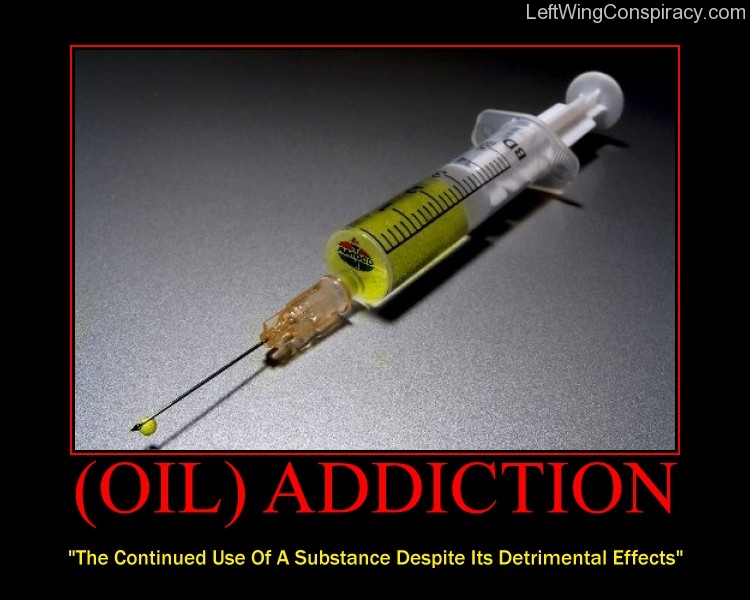So what hope is there for the future? Well After writing the various entries in this blog I have come to my own conclusion. There are many ways the future will play out and each decision that we make will impact that future. Even the choices single people make will have an effect. A single person can influence their community; their community can influence the local government or municipality which can than influence the regional government and so on and so on. Yet change in the sense of what is needed seems like a fairytale. Change is something that our society fears and resists.
http://www.treehugger.com/roger-lewis-cartoon.jpg
I will never understand the resistance to this type of change. Everything about sustainable development would make our society better. Improving the lives of the people that live in our cities through a sense of pride and high social capital, protecting natural environments and bringing green space into our lives, reducing traffic and the accompanying air pollution and the list just goes on and on. Yet people don’t want this. They would rather live in suburbia and commute through a 65 minute traffic jam twice a day to and from work; madness. It all boils down to the willingness and awareness of the mass population. As long as the masses do not care, there will be no change and no hope.
http://climatesanity.files.wordpress.com/2011/01/cartoon-from-trenberth-ams-paper.jpg
There is always the hope that future generations will be more aware of these types of issues and that the young are the future. I see no hope with the new generations and the young. Look at the pathetic excuses that are passed off as entertainment. Young people are more concerned about what happens to some useless douche bags on the MTV show Jersey Shore than what is going on in the world. This is a corporate and government design, keep the masses stupid and ignorant and they will do as they are told. John Lennon said it best in the song working class hero “...keep you doped with religion, sex and TV...” this is literally what is going on. We are so distracted by the fabricated world that is presented to us that we can’t see through the bull shit. We are unable to realize that the purpose of all the spending and the wanting and the advertising is to perpetuate the cycle of economic growth. Growth of the economy must never be risked. The almighty economy must grow no matter the cost. Any and all consequences to growing the economy are acceptable but effecting growth of the economy is outrageous. We are peons and it is sad that as I write this I realize that I’m no better than the people I criticize.... (Well at least I take the bus every day, that’s a start).
“... An entire generation pumping gas, waiting tables; slaves with white collars. Advertising has us chasing cars and clothes, working jobs we hate so we can buy shit we don't need. We're the middle children of history, man. No purpose or place. We have no Great War. No Great Depression. Our Great War's a spiritual war... our Great Depression is our lives. We've all been raised on television to believe that one day we'd all be millionaires, and movie gods, and rock stars. But we won't...” Tyler Durden
http://thesexypolitico.files.wordpress.com/2010/01/polyp_cartoon_economic_growth.jpg
http://www.holon.se/folke/kurs/paradigm/whatyou.jpg
There is a theory called the natural step, it is a wonderful theory. Basically it states that in the face of increasing demand for natural resources and declining supply of resources we will be forced into “taking the natural step” and be forced into using only a sustainable supply based on a sustainable demand. The problem with this theory is that it implies that we have common sense and good honest leadership. The reality is that in the face of declining resources and increasing demand, we will go somewhere else and take their resources. When those run out we will keep moving on like bacterial colonies feasting on the growth medium until there is nothing left.
http://www.toonpool.com/user/1295/files/apocalypse_now_164695.jpg
Change will happen to slowly, even if we got on the right track which is near impossible since each country has its own agenda and that agenda always seems to revolve around growth. The majority of people don’t want change. In fact they despise change. What is the hope for the future? The reality is that we will not change until something drastic happens we are the living in a world where convenience overrides common sense. It will take a true global disaster to bring on the necessary change. Our society is happy in its ignorance, until something happens that will wake the world up like a massive global food shortage or severe drought nothing will be done. I say prepare yourself for the worst, let the ignorant masses fend for themselves. Natural selection is going to make a comeback...wow when did I become so depressing?
https://blogger.googleusercontent.com/img/b/R29vZ2xl/AVvXsEjMp3g9rWrmLwKtbIw4bmCPZLVjKc0SmovPSFf17vAJ-orqLFdgsWbdcULaHe0nNJHFkl15ASx9rkeTi54zMNN7fQ8n68T_R7uFHOaAtJwcrcM3u-Zx5AwYEWo1q4YqPlquGCNk7q7f8IIr/s640/Economist+cartoon+global+warming.jpg






























